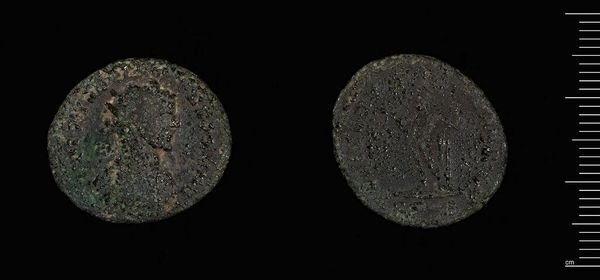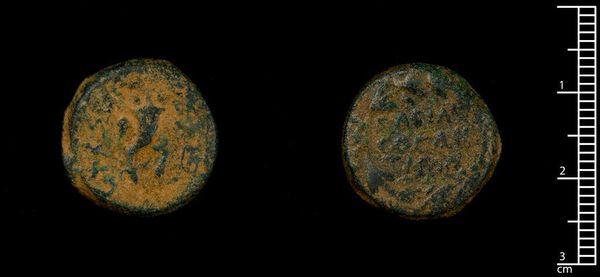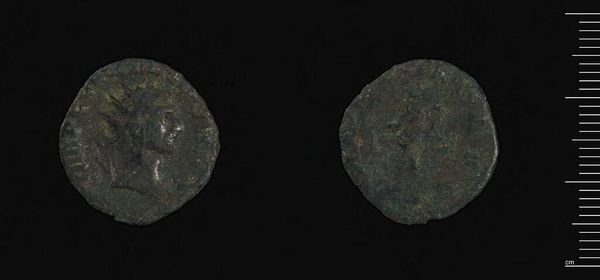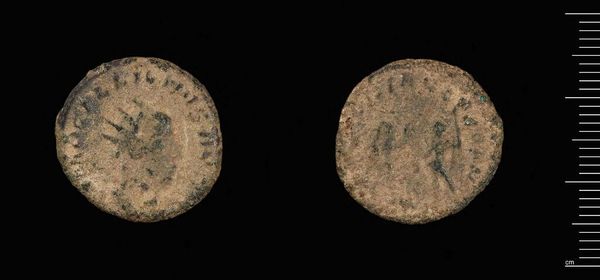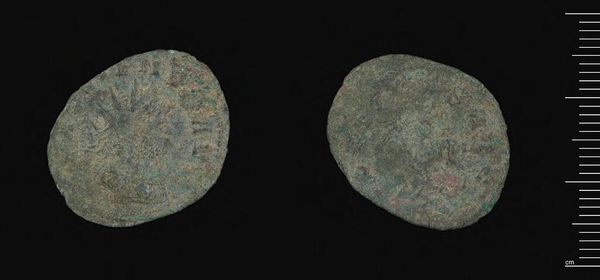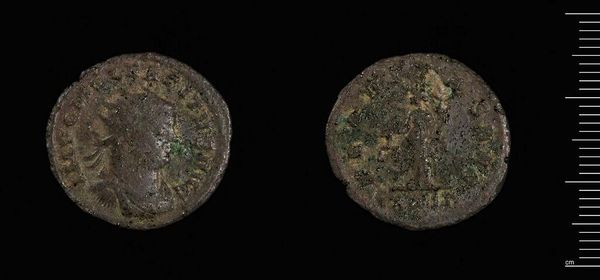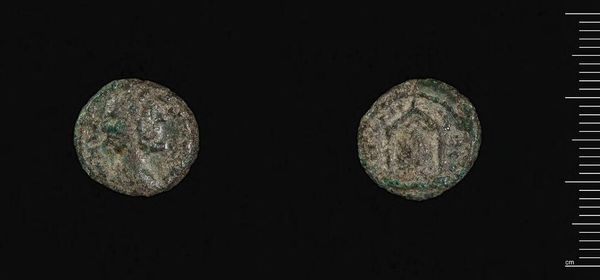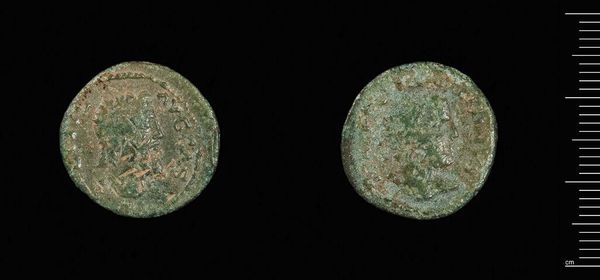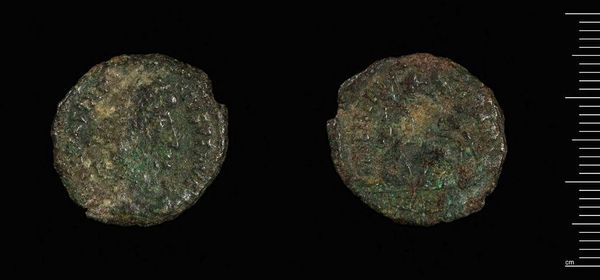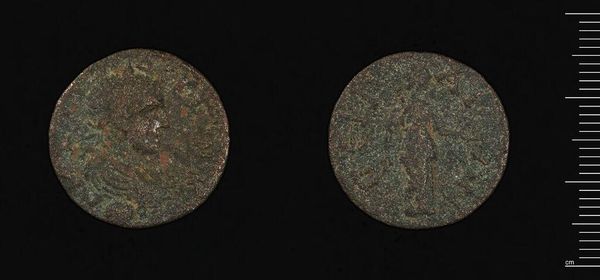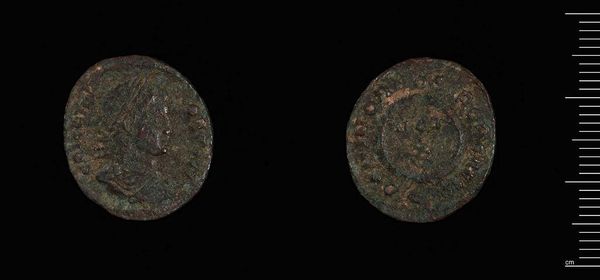
Dimensions: 7.3 g
Copyright: CC0 1.0
Curator: This is a Coin of Sardis under Gallienus, conceived during Salonina's time, residing in the Harvard Art Museums, a bronze piece weighing 7.3 grams. What are your initial thoughts? Editor: Well, the first thing that strikes me is the texture. It's heavily patinated, almost obscuring the imagery. There’s a kind of raw, earthy quality to the surface. Curator: That texture speaks to its history, doesn't it? Consider the labor involved—the mining, smelting, striking. This coin represents a whole system of production and exchange. Editor: Absolutely. The circular form, the almost imperceptible raised relief—it’s all about containment and definition. A microcosm of Roman power expressed through simple geometric forms. Curator: Indeed, and it was circulated among people, it was held, used, and worn, a part of daily life within the Roman Empire. Its production was a means to power. Editor: A fascinating interplay between the symbolic and the tangible—the abstract authority of Rome rendered in something you can hold in your hand. Curator: Exactly. It's more than just metal; it's a conduit of political and social power of the time. Editor: I agree. This really encapsulates the idea of an object transcending its material origins. Curator: Absolutely, a reminder of the intricate web of interactions behind even the simplest objects. Editor: Definitely. A small object, but packed with formal and historical significance.
Comments
No comments
Be the first to comment and join the conversation on the ultimate creative platform.
